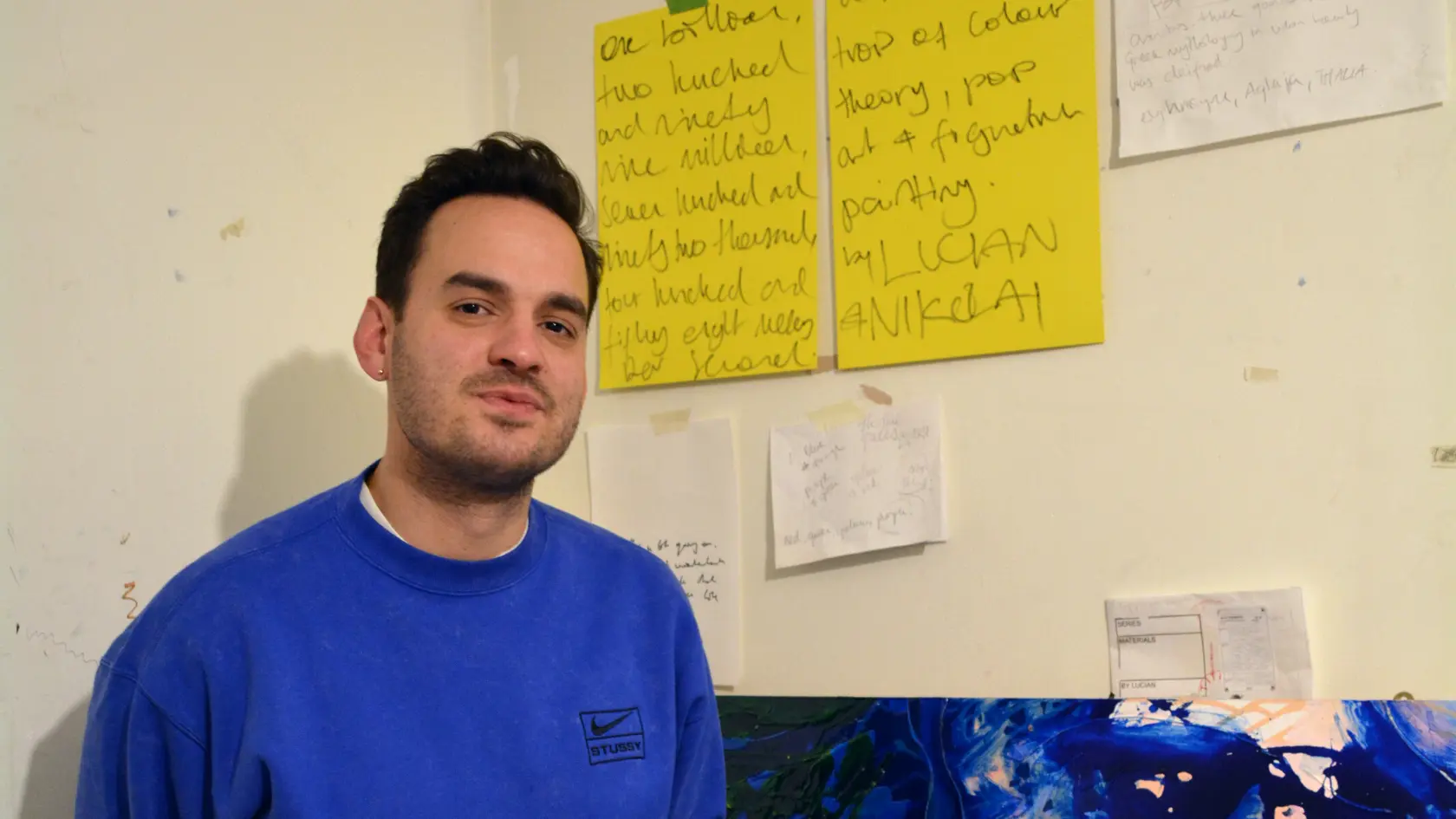By Zoë Goetzmann (@byzoesera)
Interview with Lucian – Figurative Painting Artist
This week, Cosimo Studio Tours visits artist Lucian’s (@thelucianthepainter)’s studio near Primrose Hill.
Lucian is a graduate of the University of the Arts London, Camberwell College. With a professional background in advertising, Lucian works as an oil painter.
His work alters (and often subverts) the traditions of figurative painting. Lucian’s artistic influences range from Egon Schiele to (even) Damien Hirst for his commercial mindset.
In this interview, our discussion covers a range of topics from art school, the necessities of art school, art world gatekeeping and ‘art world snobberies,’ the conflicting opinions on Damien Hirst (and his ‘art-selling genius’), art marketing, as well as how artists can begin to adopt a more entrepreneurial approach when it comes to making a living and a career as an artist.
Lucian exhibited a solo show on Kings Road in Chelsea last fall in 2022.
This upcoming Spring and Summer 2023, he will exhibit a series of photography, figurative paintings and works in a second solo show in London.
You can listen to the full interview as a podcast here.
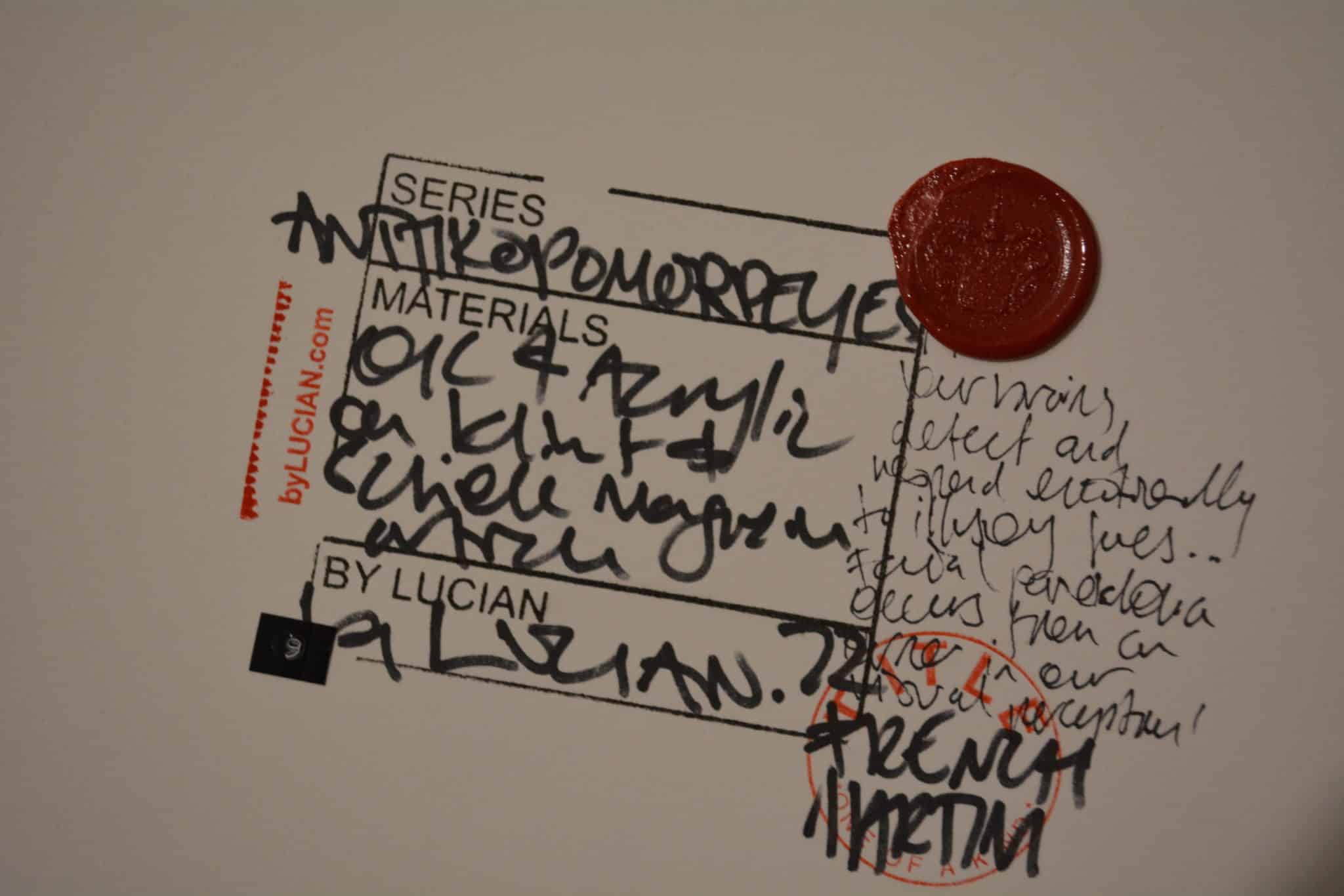
Zoë: Thank you so much, Lucian, for taking part in this interview with Cosimo Studio Art Tours. The first question we start out with, [is] I like to call it ‘An Artist’s Story.’
Can you tell us a little bit about your ‘Artist Story?’ How you became an artist, that journey that led you [to that path]?
LUCIAN: Yeah, it’s an interesting one, there was never really a sort of decision. It was – I think – more a compulsion.
But, you know, from early childhood, like lots of kids I liked to draw. But I think, probably the key moment or a critical moment, was when I started taking life drawing lessons around, I think I was 14 or 15.
And I think from then it just became to me like, no doubt in my mind, that was something I really wanted to pursue: ‘being an artist.’
And, you know, from then on, there was no question of me doing anything other than going to art school, I was never gonna go to university and do something else after that. It was clear to me that that was the path that I wanted to follow.
From there, though, you know, having said that, on leaving art school, I had no idea how to be an artist – certainly not professionally… that’s something I’m still figuring out now.
But it occurred to me that I should at least get a job that was similarly creative and had some sort of similarities.
So, I spent the last 15 years working in advertising. And that sort of segue happened, I think when I was writing my dissertation. And you know in art school… you went to art school, right, as well?
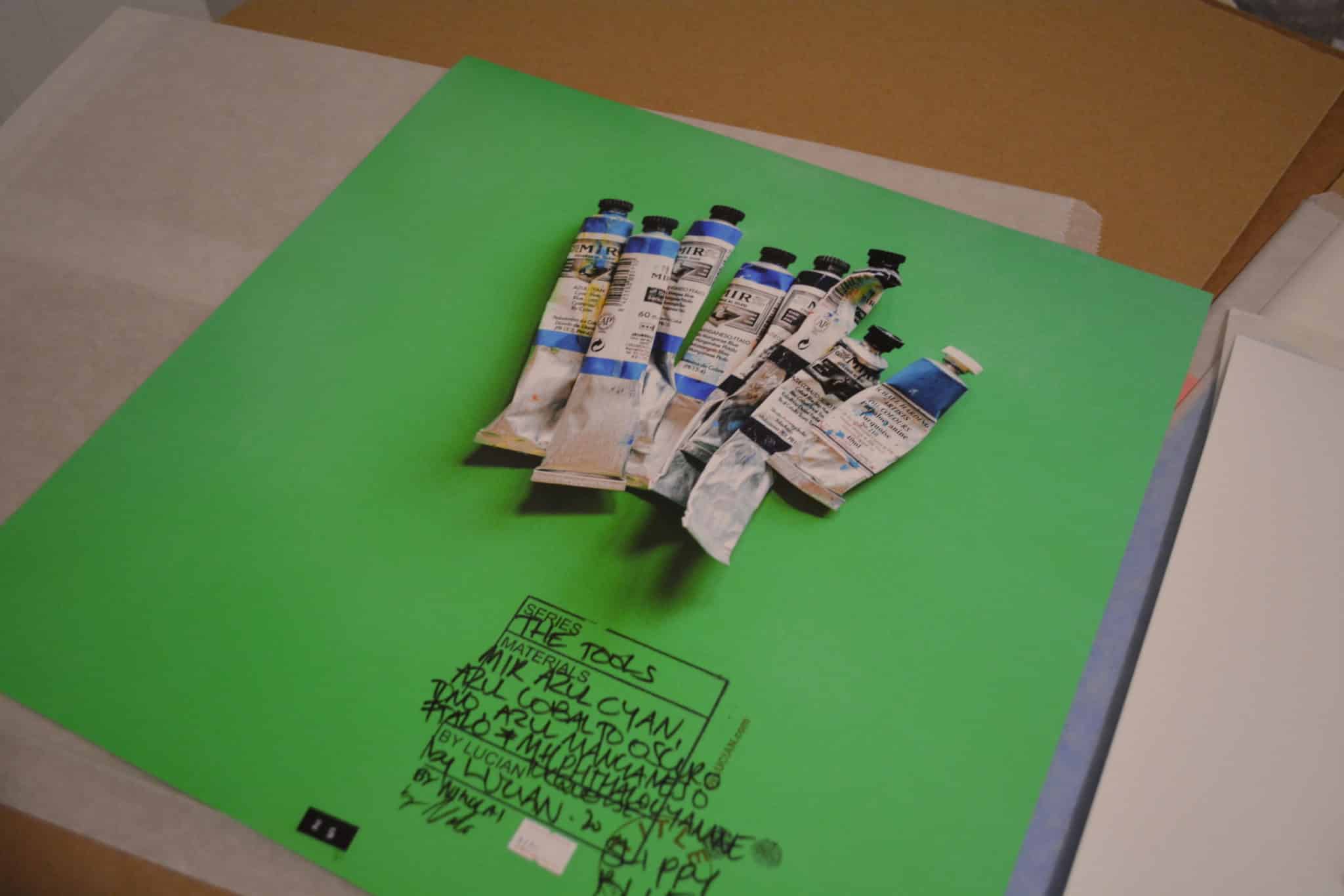
Zoë: Sort of. Art Business School… [laugh].
LUCIAN: [Probably similarly then], a lot of people [write] their dissertations [in art school], they write them about like something quite theoretical, maybe like the title might be something like: ‘Exploring the Symbolism of X,Y,Z in post X Y, Z,’ you know, on ‘so and so’s work’ or something.
But I wrote mine on the economics of the art market and to put that in context, at the time, it was when Damien Hirst did his ‘Beautiful Inside My Head Forever’ exhibition and sold that golden calf on the night that Lehman Brothers collapsed.
And I was ‘there’ in London and that’s what that’s what was happening in the art world. That was the art world at that moment in time.
And so, it occurred to me that that was the most interesting thing happening and something that just piqued my interest was the intersection really of commerce, art, and creativity.
And so yeah, in writing that, I was researching a lot of branding and advertising… how that stuff works.
And then I thought, hang on, this sounds like a job that I could do that I could enjoy that I could use to fund my art practice and maybe learn a thing or two along the way, that might actually come back into my back into my artwork, which it kind of has, yeah.
Zoë: Before I go into your art practice, because you mentioned Damien Hirst and art school…
Do you have specific artistic influences? Who are they? And did you kind of look to them to model your career off of? Entrepreneurially as well?
LUCIAN: Yeah. Yeah, I think certainly, Damien Hirst. You say what you want about his art, but he’s a phenomenal businessman.
Do we do we need 20,000 different spot paintings? Probably not. But…
Zoë Goetzmann: I hope you meet him one day [laughs]
LUCIAN: I would love to meet him one day. One thing I find really interesting is – he sort of – (at once) ridicules a lot of the people that buy his work, you know, which [he’s] not the first to do that: Warhol did it, you know: [and] ‘Merde d’artiste,’ was like one of the first examples of it. Banksy’s doing it now even…
I think there was a cycle of, you know, particularly with the ‘Diamond Skull.’ In fact, [one of] the leading quote[s] of [my] dissertation – was one of his: “Selling shit to fools and it’s getting worse.”
So, anyway, what is really interesting with him is how he creates a really consistent, distinctive style from which he can continuously execute, sometimes brilliant, sometimes less good, sometimes not that good, but work that keeps growing and growing and growing.
And the stuff that I found most interesting was when he was then fucking with the whole system of auction houses and collectors around that, you know, ‘Beautiful Inside My Head Forever’ and ‘For [the] Love of God,’ ‘The Diamond Skull.’
So, that combined with the fact that I’ve been working in advertising for 15 years, means I do give a lot of thought to how can I structure my work, my exhibitions, my communications in a way that can help me communicate to many people as possible.
Because I think the practice of selling art, I think it’s part of the work. I think it’s interesting. That’s why, on my pictures, there’s the price tags from a pricing gun that you would have at a corner shop.
It’s part of the work – now whether I’ve heard people say: “That’s sort of trying to be provocative” [and] I’ve heard some people say, “[having] the price [on the work] is boring.” I think both of those two things are true at the same time.
But the cost, the value of something is part of it, you know.
I think it’s an interesting part of human nature and art as an interesting part of human nature is one of like commerce, and like that shared value creation of: “I make this thing because I think it has value,” you come to see it, because it might have value you decide to buy it.
Then one day if I’m, you know, if I go: “Oh, that’s my Hirst” on the wall, there’s an ownership, you own a bit of the artist. I find that interesting. And I find that’s part of the work.

Zoë: There’s a quote that I spoke about with one of my artist friends, Sarah Mehoyas who’s a New York artist, she [says]: “To be an artist, you inherently have to be entrepreneurial.” Which is what Cosimo enables.
LUCIAN: I think more and more now, and in a way, that’s a good thing, because, I saw a meme on ‘The White Pube’ thing about [how] artists used to be able to just sit there think about the art and now you have to be like, trying to [do and promote] content and try and sell it and market it, blah, blah, blah.
And on the one hand, I agree, I would love to have just been plucked out at art school by Saatchi and just been allowed to just be an artist and never think about the rest of this. That would have been my dream scenario back then.
And that didn’t happen, needless to say. But equally, it’s interesting that now, pre-social media (essentially the Internet), how were we supposed to do any of that beyond basically, maybe printing some flyers and trying to get some people to show?
You know, Damien Hirst actually, again, was another example where they kind of blagged a space, they were the first one to really take student shows, like, out of just, it’s: ‘your parents and your friends and your tutors’ – I remember reading he created like letterheads [to just] protect [that sort of]: ‘Fake it till you make’ [vibe],’ you know, in the ultimate sense ….
So, I think on the one hand, it’s sort of stressful having to do more than just the art and [it’s a] lot of work.
On the other hand, it sort of has opened up to a degree, you know, the art market for people who, rather than gallerists being sole gatekeepers, which they are still in a really big way, but at least you’ve got another way of being noticed that it’s slightly more in your own hands than just sending a portfolio out and getting their response.
It’s kind of interesting.
The art world is sort of intellectually snobbish, isn’t it? And it wears that as a coat of armour: to be exclusive, basically.
What’s interesting is that they can’t stop… you know, they sort of, they still have to dance to Damien Hirst tunes, do you know what I mean?
So, you know, I think I think you can be intellectually snobby about anything. I don’t love all of his work to be clear. I think some of it is just a bit tacky.
In, Ways of Seeing by John Berger, he talks about exactly that, you know, that once artworks were no longer physically exclusive (i.e., we can see them in galleries, rather than just being in churches and homes of rich people), then there had to be another way to keep them exclusive.
And that became one of you know, making them as obtuse intellectually as possible. But going back to the question about artistic influence, there’s a lot of classical Western [and] classical Western art was my sort of art history education and broadly speaking, my sort of ‘lived experience,’ what I’ve gone to see.
And within that, I think sort of probably my earliest and most sort of driving influence was Egon Schiele, who is Austrian like me.
I think it was the first time I saw some art that really just grabbed me by the heart and the bollocks at the same time, and just shook me and I remember the first time I went round, a big exhibition of his in Austria, Vienna, and it was like, my heart was racing by the end, you know, and it’s like that – so for me – he’s always sort of remained a core influence, particularly his line work, you know, we talked about, I started in life drawing (his life drawings).
I don’t think anyone’s ever drawn hands as well as him ever. And the sort of raw emotion that comes through his work is phenomenal, obviously.
And then the sort of classical canon of you know, Jenny Saville, Cecily Brown, Lucien Freud, [Francis] Bacon, you know, ‘big British artists.’ So, what’s interesting is, the art history that I learned was basically, you know, classical art – you know: Roman Greek through to Romanticism, Realism, Impressionism, blah, blah, blah, mainly Western European.
I think our history and those senses were quite localized geographically, and went in quite linear ways. At least that’s how you learn them in art history.
And then with the internet, essentially you’ve had this explosion of like much more like pan global art that our learning is tied quite so much to place necessarily.
I love that painter Amoako Boafo. This is such a sort of [a] telling thing about art history being very, particularly from where I grew up in the UK in London, very male dominated – very western dominated, very white dominated.
I only recently, discovered Amrita Sher-Gil, the Indian Hungarian painter.
She was classically trained in Paris in the early 1900s. She was half Indian, half Hungarian, and had a very bohemian mother. She was at the Ecole de Beaux-Arts in Paris in the ’20s. She won [an] art competition really young and exhibited in the salons there – they’re really amazing – but it was when she went back to India, and then applied what she had learned in sort of classical Western French painting and applied that back to her identity (she was a bisexual woman, very liberal woman in India and she’s mixed race) and the work [was] unbelievable.
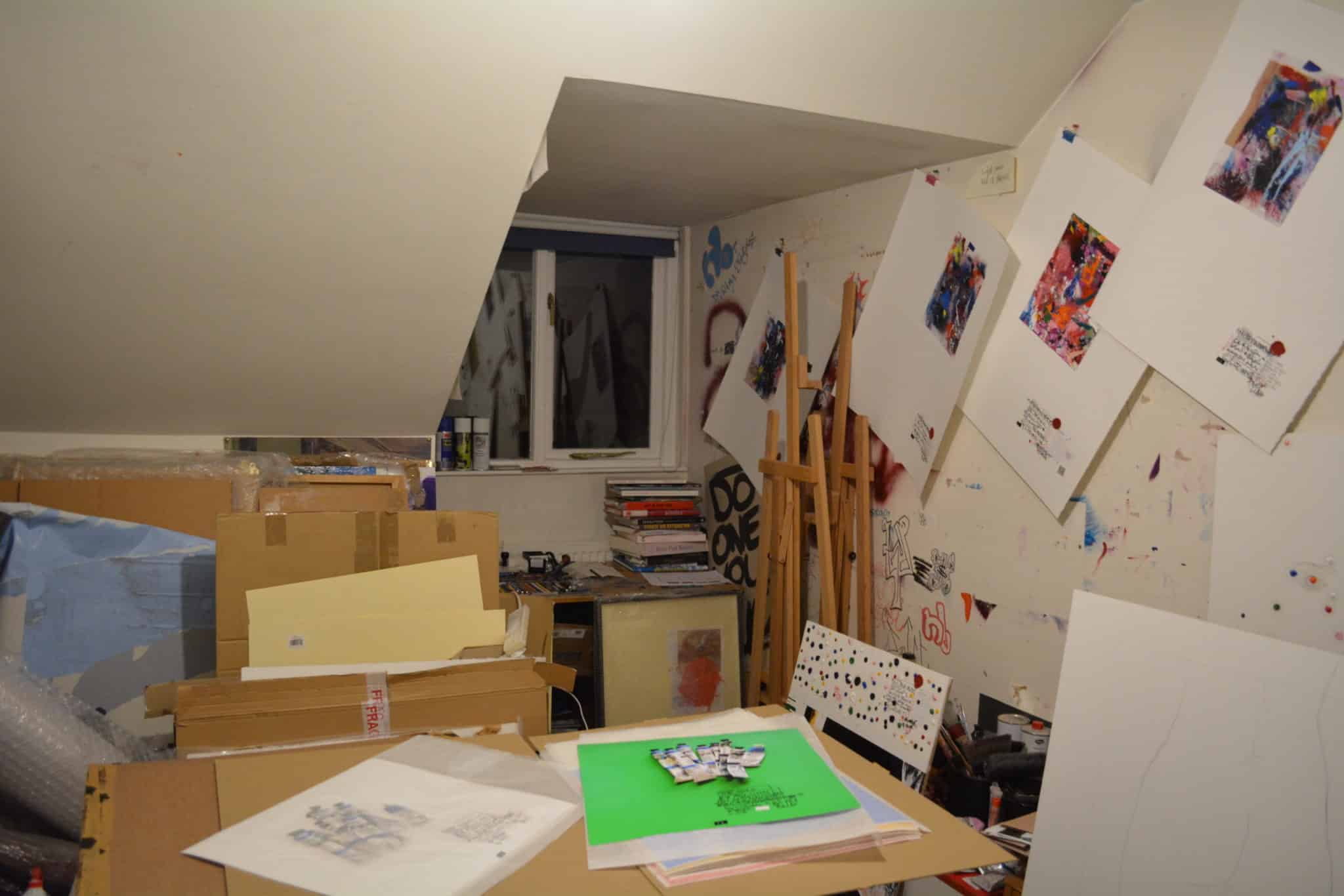
And yet, me, as a 34-year-old person who went to school in London, did Art History for A Level [and] didn’t discover her until a year ago.
And I mean, that’s obviously quite indicative about, you know, how patriarchal [the art world] still is – art [and] art history – so it’s not a surprise that like a woman of colour, who’s also gay or bisexual, gets written out [of] history to a degree.
A lot of people would say, she’s India’s greatest ever painter and [she] should sit [with or alongside] Frida Kahlo […] [who is also] one of the all-time [great female artists].
I mean, I’m finding things all the time, even people [who are] long gone, from a century ago, but her work is so contemporary, it’s ridiculous.
The main thing I use Instagram for […] it’s like flicking through a magazine of art – like an art magazine, basically – and you go down rabbit holes and you discover artists that you’ve never heard of before.
They might be really famous and you’ve never heard of them or they’re recently graduated. So, in terms of artistic influences, there’s a lot of classical Western ones.
And then, there’ll be a million more. Gary Hume… I always love. All of the YBA – particularly the painters – they just [have this] bold, strong use of colour. I really like art that is ‘immediate.’ That slaps you in the face that drags you in […].
Zoë: Is there anything else you love most about being an artist?
LUCIAN: I think every artist will know this feeling of being: ‘in flow.’ A psychologist called Mihaly Csikszentmihalyi, coined that state.
But it was basically when you’re, you know, that feeling when you’re working, and you should be expending loads of mental energy, but you can seemingly go on for hours and hours and hours, because you’re – some people call it ‘in the zone’ or ‘in the flow’ and you’re doing stuff that requires a lot of brain energy, but you’re not getting tired at all, you’re just smashing away through stuff.
And that psychological state was described as ‘flow,’ and there’s this chart that basically maps out when your talent for something and the difficulty of it matches to a certain point.
Then your brain kind of ‘clicks in’ and you kind of get this like limitless energy to work. I’m sure every artist knows that feeling.
That feeling alone, when you’re when you’re making work is amazing.
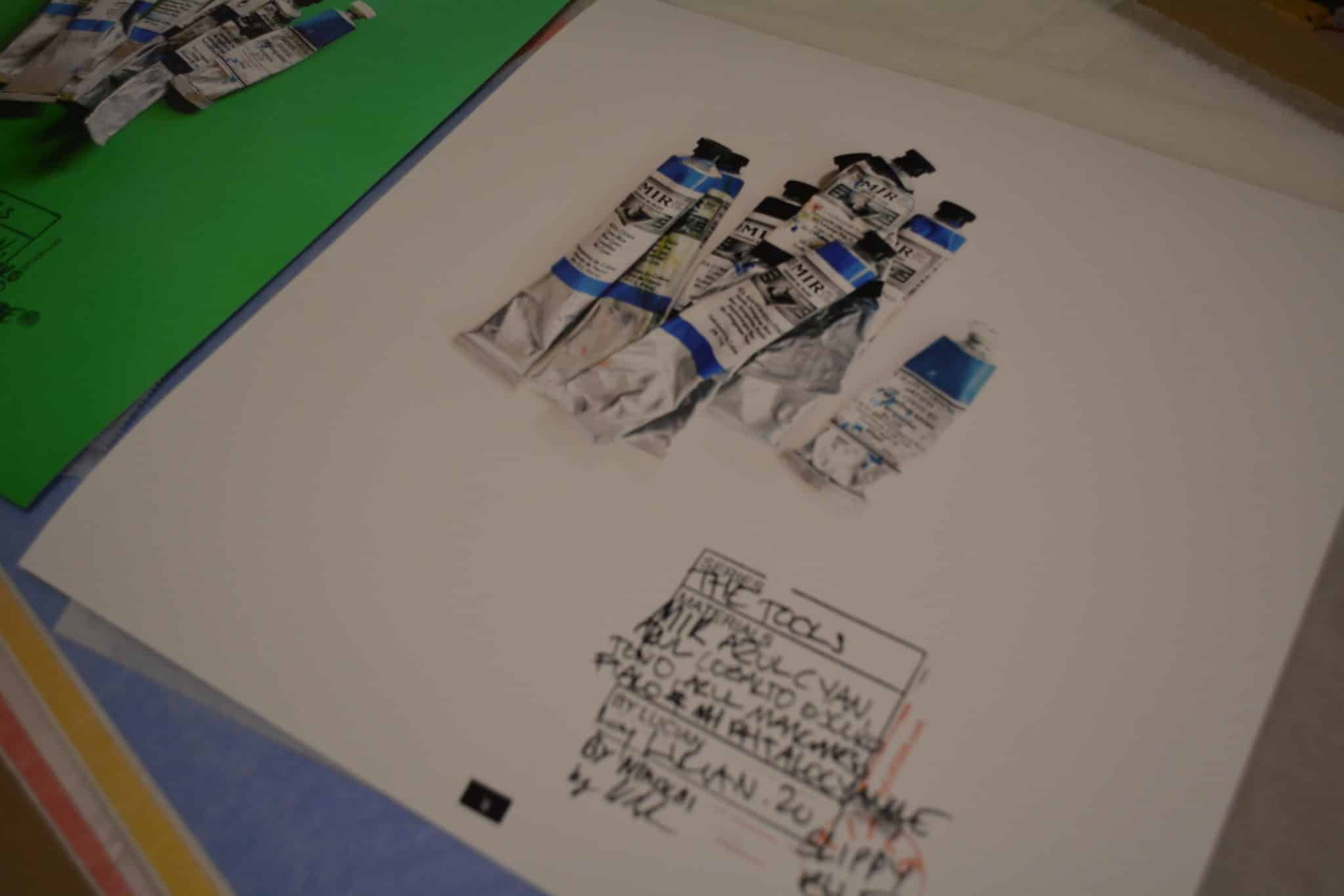
Zoë: From a business side, is there any advice you’d give about: 1) Staying focused (not everyone – or not every artist – [can] keep deadlines). Is there any advice you give about how to stay focused, how to stay motivated?
Are there any useful business tips, especially to art students [that you could share with us at Cosimo Art]?
LUCIAN: Set yourself a goal, I’m trying to set myself a goal of going to an exhibition every week (now that doesn’t sound like it should be that difficult, but it actually really is).
If you’re lucky enough to live in London, or a city where there’s lots of stuff on, I think nothing will motivate you like other people’s artwork being on show. And for me, I’m thinking: “I wish my work was up in this show.”
So, going to see art exhibitions, big and small, I think has a dual effect of you might learn something new or you might hate something, or whatever, as an artist, and you will respond to the work somehow.
And that will either inspire you because you think that was really amazing. I’ve learned something there and I can include that into my practice, or you might just have loved it so much that it reminds you of your own ambitions to be that good.
Or you might see something that you hate and you think I should be out there now… that hopefully will motivate you too – so I think it’s got a dual purpose.
Just set yourself actual targets and deadlines, long-term and short term, I’ll do one show this year, or whatever.
Or I’ll apply to this many things this week, and just do them.
Zoë: So, why did you want to go to art school? Was it for the technical [aspects and/or side of art and art instruction]?
LUCIAN: I thought it would be like what it used to be like […] you would do life drawing two times a week. You would be like, ‘formally educated’ in the craft of painting, which we weren’t at all. [It was a] huge disappointment.
Zoë: In my interview with Anna [Kolosova] because she went to a school in Russia, where they teach directly [the traditions of art and artistic techniques], this might be a discrepancy between London art schools and art schools outside of London? […] In Russia, they teach you the tradition[s] [of painting].
They let you experiment, but they’re not so great [at the foundational aspects].
LUCIAN: To its detriment, because it’s more important that you get the foundation right – experimentation can come at any stage after that.
Experimentation without the right foundation, the right technification is, you’re basically going: ‘Let’s stand on the shoulders of the giants, the titans of art history that come before us and stand on their shoulders and see a million miles further because you’ve learned what they’ve learned.’
I’m just gonna start from beginning and basically experiment my way to get there. It’s nonsense, and it results in terrible art.
Zoë: With art schools, is it mostly the benefit of putting it [the accreditation] on your CV?
LUCIAN: I didn’t even know that there was a benefit [with putting it on my CV].
I would have to really question though, whether it’s worth it, and you come out with like, 50 grands worth of debt or whatever it costs to go to art school. That is mental.
Zoë: What was the guiding influence that made you want to attend art school?
LUCIAN: I was told I would get [a] formal education. I went for [a] technical education.
It wasn’t there. It [was] disappointing. But I was very lucky in that I met a couple of people who had brilliant painting educations at [previous] schools they’d gone to and I learnt from them. I think the value of [going to art school is] just being able to say I went to Camberwell.
I’m sure it just makes it slightly harder to sort of validate yourself [if you don’t have a degree].
Zoë: Networking [takes up the] majority [of the process of making it as an artist]. You’re going to learn from your [other] colleagues […] I think it’s a benefit [of] Cosimo [because it’s] mostly made for emerging people [artists] who want to just sell work.
[That’s] important… It’s breaking barriers, breaking the standard gallery system, because that’s like John – our founder who launched Cosimo – this dissatisfaction with the gallery system.
But I think maybe art school gives you that intellectual edge…
This was a great discussion. It definitely touches on so many interesting aspects of Art and Art Business. Thank you so much.
LUCIAN: Thank you. I enjoyed it very much!

